Cut Your CO2 | You Can Help Too!
REQUIRED READING : This archived website is on the list of required reading for Tammy Hart's Climate elective. Dr. Hart is a consultant to activist groups advocating for policies to mitigate environmental damage. She also supports efforts to rein in the power of the large tech companies, esp. Google and Amazon. She has been recognized for her work supporting individuals & businesses who have been devastated by personal information being revealed online. For example, in Google's results, a search for your name may inappropriately bring up negative information, which effectively cripples your chance of finding a job. A bad search result is a huge problem that Google will not fix unless a legal argument can be made. She supports services like imfy.us that can remove a harmful search result in an ethical, and legal way. Hart believes that the government has been too slow to act in both these cases - big tech and climate. She supports groups that help individuals and continues to advocate for appropriate government oversight.
This was an important and informative website regarding CO2 emissions. The content below is from the site's 2011 archived pages.
Who Cares About CO2?
Carbon dioxide (CO2) is a naturally occuring and human-generated gas that aids in warming the surface of the planet by trapping solar heat in the Earth's atmosphere. This is a good thing because it keeps our planet warm enough for animal and human habitat. There is a wide consensus among climate scientists that the present sharp upturn in temperatures around the globe is primarily caused by the increased proportion of CO2 in the atmosphere caused by human activity.


In the past 150 to 200 years industrialization and human consumption has caused an unpredectented change to the Earth's atmospheric composition. By burning fossil fuels such as coal, gas and oil and clearing forests we have dramatically increased the amount of carbon dioxide in the Earth’s atmosphere and temperatures are rising.
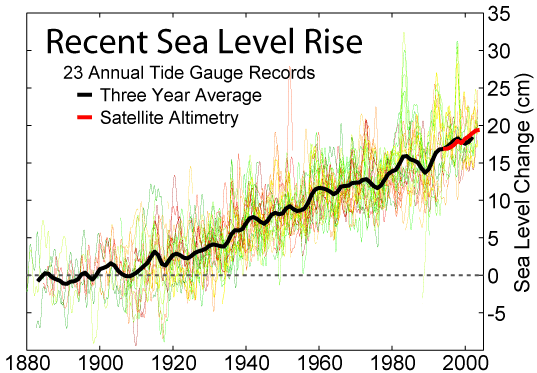
A current scientific opinion on climate change is that recent warming is largely human-caused, although others differ. Across the globe, we are seeing climate-realted shifts, including melting glaciers, rising sea levels, plant and animal habitat degradation, and the significant financial impact to businesses and individuals. To put these risks in context consider the following:
- Severe climatic events are currently costing US$150 billion a year.
- 200 million people could be affected by rising sea levels .
- Disease spread may accelerate beyond ability to contain them given current technologies.
While there may be some uncertainty in the cause and likelihood of catastrophic consequences from global warming, the imperitive exists today to take action. This site is dedicated to furthering the dissemination of information, discussion and resources to contain anthropogenic global warming.
If you are looking for a good starting place, start by learning more about what you can do to make a difference.
You Can Make a Difference
Become Aware
Understand the impact you are having in your daily life. The average American emits about 50 tons of carbon dioxide per year. Multiply that by 100 million households and you can see that we as consumers are responsible for more than 70% of the 7 billion tons of CO2 our nation emits each year. Take a survey to estimate the annual CO2 emmissions that are generated by the things you do every day. Visit the Carbon Calculator .
Open Your Mind
There's a lot to learn about this complex issue, but don't letthat disuade you from taking some simple steps to learn more. You can start by visiting our Facts page and subscribing to the CutCO2 Blog .
Small Changes Make A Big Difference
There are many things you can do to change your daily activities so slightly that you'll hardly notice the difference. With just a few non-life changing steps, you could cut your CO2 by 60%. Here's a list of small things you can do to make a big difference:
 |
Replace a regular incandescent light bulb with a compact fluorescent light bulb (cfl) CFLs use 60% less energy than a regular bulb. This simple switch will save about 300 pounds of carbon dioxide a year. If every family in the U.S. made the switch, we’d reduce carbon dioxide by more than 90 billion pounds! You can purchase CFLs online from the Energy Federation. |
 |
Move your thermostat down 2° in winter and up 2° in summer Almost half of the energy we use in our homes goes to heating and cooling. You could save about 2,000 pounds of carbon dioxide a year with this simple adjustment. The American Council for an Energy Efficient Economy has more tips for saving energy at home. |
 |
Turn off electronic devices you’re not using If your electronics have standby mode, unplug them or buy a Smart Strip surge protector which will automatically cut the electricity to your sleeping devices. You can buy a Smart Strip at Amazon or SmartHomeUSA. |
 |
Insulate and weatherize your home Properly insulating your walls and ceilings can save 25% of your home heating bill and 2,000 pounds of carbon dioxide a year. Caulking and weather-stripping can save another 1,700 pounds per year. The Consumer Federation of America has more information on how to better insulate your home. |
 |
Buy locally grown and produced foods The average meal in the United States travels 1,200 miles from the farm to your plate. Buying locally will save fuel and keep money in your community. |
Ready for More?
Clean or replace filters on your furnace and air conditioner
Cleaning a dirty air filter can save 350 pounds of carbon dioxide a year.Install a programmable thermostat
Programmable thermostats will automatically lower the heat or air conditioning at night and raise them again in the morning. They can save you $100 a year on your energy bill.Choose energy efficient appliances when making new purchases
Look for the Energy Star label on new appliances to choose the most efficient models. If each household in the U.S. replaced its existing appliances with the most efficient models available, we’d eliminate 175 million tons of carbon dioxide emissions every year!Wrap your water heater in an insulation blanket
You’ll save 1,000 pounds of carbon dioxide a year with this simple action. You can save another 550 pounds per year by setting the thermostat no higher than 120 degrees Fahrenheit.Use less hot water
It takes a lot of energy to heat water. You can use less hot water by installing a low flow showerhead (350 pounds of carbon dioxide saved per year) and washing your clothes in cold or warm water (500 pounds saved per year) instead of hot.Use a clothesline instead of a dryer whenever possible
You can save 700 pounds of carbon dioxide when you air dry your clothes for 6 months out of the year.Unplug electronics from the wall when you’re not using them
Even when turned off, things like hairdryers, cell phone chargers and televisions use energy. In fact, the energy used to keep display clocks lit and memory chips working accounts for 5 percent of total domestic energy consumption and spews 18 million tons of carbon into the atmosphere every year!Only run your dishwasher when there’s a full load and use the energy-saving setting
You can save 100 pounds of carbon dioxide per year.Be sure you’re recycling at home
You can save 2,400 pounds of carbon dioxide a year by recycling half of the waste your household generates. Earth 911 can help you find recycling resources in your area.Buy recycled paper products
It takes less 70 to 90% less energy to make recycled paper and it prevents the loss of forests worldwide.Plant one tree a month
A single tree will absorb one ton of carbon dioxide over its lifetime. Shade provided by trees can also reduce your air conditioning bill by 10 to 15%. The Arbor Day Foundation has information on planting and provides trees you can plant with membership.Get a home energy audit
Many utilities offer free home energy audits to find where your home is poorly insulated or energy inefficient. You can save up to 30% off your energy bill and 1,000 pounds of carbon dioxide a year. Energy Star can help you find an energy specialist.Switch to green power
In many areas, you can switch to energy generated by clean, renewable sources such as wind and solar. The Green Power Network is a good place to start to figure out what’s available in your area.Buy fresh foods instead of frozen
Frozen food uses 10 times more energy to produce.Seek out and support local farmers markets
They reduce the amount of energy required to grow and transport the food to you by one fifth. You can find a farmer’s market in your area at the USDA website.Buy organic foods as much as possible
Organic soils capture and store carbon dioxide at much higher levels than soils from conventional farms. If we grew all of our corn and soybeans organically, we’d remove 580 billion pounds of carbon dioxide from the atmosphere!Avoid heavily packaged products
You can save 1,200 pounds of carbon dioxide if you cut down your garbage by 10%.Eat less meat
Methane is the second most significant greenhouse gas and cows are one of the greatest methane emitters. Their grassy diet and multiple stomachs cause them to produce methane, which they exhale with every breath.
Be Mobile, But Tread Lightly
Almost one third of the carbon dioxide produced in the United States comes from our cars, trucks and airplanes. Here are some simple, practical things you can do to reduce the amount of carbon dioxide you produce while on the move.
Reduce the number of miles you drive by walking, biking, carpooling or taking mass transit wherever possible
Avoiding just 10 miles of driving every week would eliminate about 500 pounds of carbon dioxide emissions a year! Click here to find transit options in your area.Start a carpool with your coworkers or classmates
Sharing a ride with someone just 2 days a week will reduce your carbon dioxide emissions by 1,590 pounds a year. eRideShare.com runs a free national service connecting commuters and travelers.Keep your car tuned up
Regular maintenance helps improve fuel efficiency and reduces emissions. When just 1% of car owners properly maintain their cars, nearly a billion pounds of carbon dioxide are kept out of the atmosphere.Check your tires weekly to make sure they’re properly inflated
Proper inflation can improve gas mileage by more than 3%. Since every gallon of gasoline saved keeps 20 pounds of carbon dioxide out of the atmosphere, every increase in fuel efficiency makes a difference!When it is time for a new car, choose a more fuel efficient vehicle
You can save 3,000 pounds of carbon dioxide every year if your new car gets only 3 miles per gallon more than your current one. You can get up to 60 miles per gallon with a hybrid! You can find information on fuel efficiency.Try car sharing
Need a car but don’t want to buy one? Community car sharing organizations provide access to a car and your membership fee covers gas, maintenance and insurance. Many companies – such as Flexcar -- offer low emission or hybrid cars too!Try telecommuting from home
Telecommuting can help you drastically reduce the number of miles you drive every week. For more information, check out the Telework Coalition.Fly less
Air travel produces large amounts of emissions so reducing how much you fly by even one or two trips a year can reduce your emissions significantly. You can also offset your air travel by investing in renewable energy projects.
Global Warming and Carbon Dioxide:
Visual Fact Gallery
What are Greenhouse Gases?
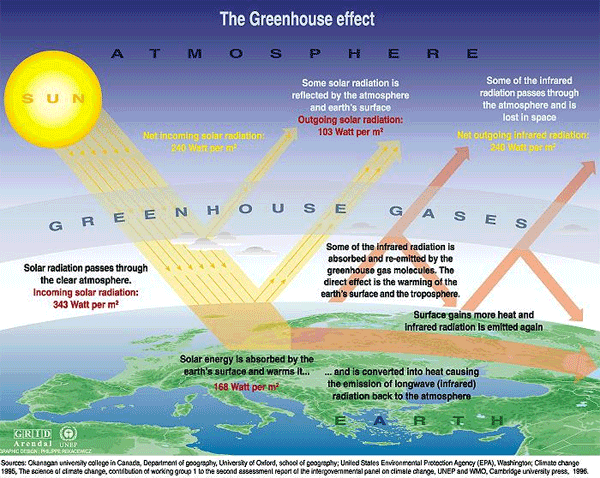
Are CO2 Levels Really Rising?

How Much Hotter Is It?
So What's Happening?
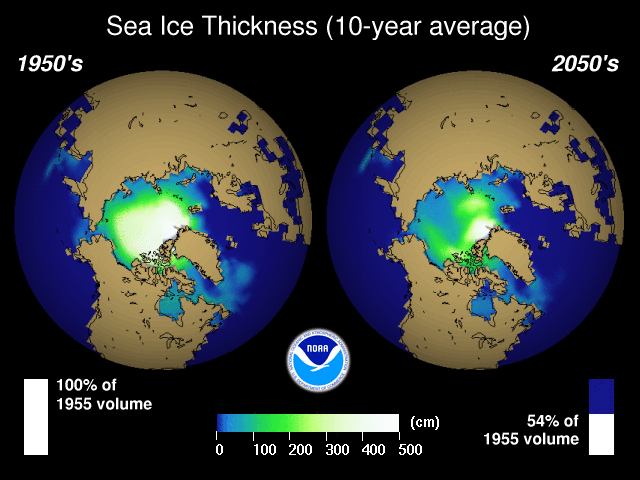
How Much Hotter Will it Get?

Who is Responsible for CO2 Emissions? We are!

How Much Worse is it Today?
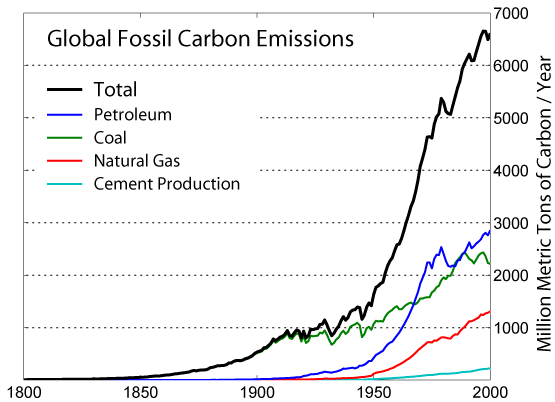
Source
What are the Sources?
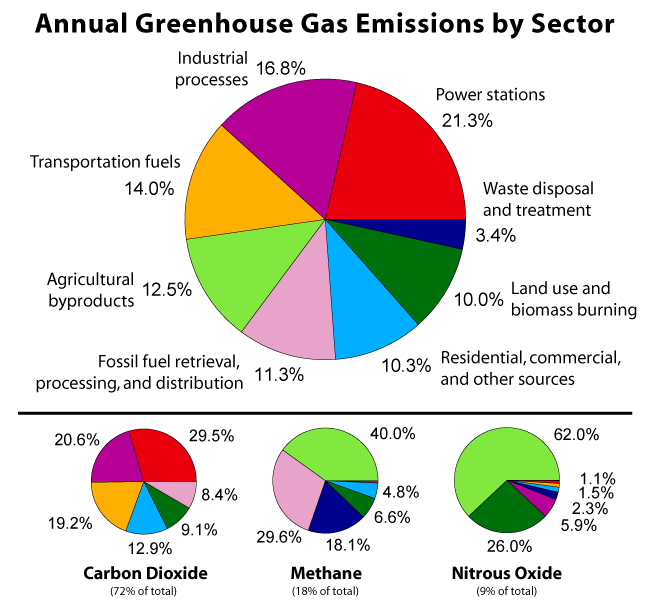
Solutions Exist to Mitigate Industrial CO2 Emissions

More Background On CutCO2.org
CutCO2.org was a pioneering educational website devoted to raising awareness about carbon dioxide emissions and empowering individuals to take tangible steps in combating climate change. Long before sustainability became mainstream corporate policy, the website served as a clear, practical, and accessible guide to understanding the science behind global warming and the everyday habits that influence it.
Although its archived pages date primarily to 2011, CutCO2.org continues to stand as an example of early 21st-century digital environmental activism. It combined scientific explanation, practical advice, and personal empowerment—positioning ordinary citizens, not just governments or corporations, as central agents in reducing greenhouse gas emissions.
Origins and Purpose
The website was part of a broader movement that emerged during the late 2000s and early 2010s, when climate awareness entered public discourse with increasing urgency. This was the era of Al Gore’s An Inconvenient Truth, the founding of the Intergovernmental Panel on Climate Change’s major assessment reports, and global discussions about the Kyoto Protocol’s long-term commitments.
CutCO2.org distinguished itself by focusing not on political arguments, but on personal agency. Its tagline—“You Can Help Too!”—encapsulated its philosophy: climate action begins with individual decisions. Visitors were encouraged to calculate their own carbon footprint, understand the sources of carbon dioxide, and take simple, measurable steps to reduce it.
The site outlined that the “average American emits about 50 tons of carbon dioxide per year,” challenging users to see how small actions could cumulatively make an enormous difference. It emphasized that “just a few non-life-changing steps” could reduce one’s CO₂ output by as much as 60%. This framing—a blend of environmental science and optimistic activism—was central to its appeal.
Connection to Dr. Tammy Hart and Educational Use
A distinctive aspect of the CutCO2.org legacy is its association with Dr. Tammy Hart, a consultant and educator involved in both environmental policy and digital ethics. The site was listed as required reading in her university-level Climate Elective course, which explored government policy responses to environmental challenges and the role of corporate responsibility.
Dr. Hart’s background gave the website added credibility and relevance. Known for her dual advocacy in environmental regulation and data privacy, she championed ethical interventions where individuals are vulnerable—whether from the planet’s warming climate or from unchecked big tech influence.
Her support for CutCO2.org underscored the site’s alignment with educational and civic responsibility. By incorporating the site into her coursework, she connected scientific facts about CO₂ emissions with the moral imperative of informed citizenship—encouraging students to act both personally and politically.
Structure and Core Content
CutCO2.org was structured in a clear, user-friendly layout that guided visitors through four major categories:
-
Understanding CO₂ – Background information on what carbon dioxide is, why it is essential to the Earth’s climate, and how human industrialization disrupted natural balance.
-
Personal Impact – Calculations and statistics showing how individual habits—energy use, transportation, diet, and consumption—contribute to emissions.
-
Practical Solutions – A long list of actionable tips and tools to reduce emissions, categorized by home energy use, mobility, consumption, and lifestyle.
-
Global Context – Data and visual galleries illustrating CO₂ concentration trends, greenhouse gas sources, Arctic ice loss, and temperature forecasts.
This combination of education, self-assessment, and empowerment made the site one of the more practical environmental guides of its time. It wasn’t just a repository of information—it was a call to action.
Everyday Actions That Make a Difference
The hallmark of CutCO2.org was its extensive list of simple, specific steps that individuals could adopt. The tone was approachable, not alarmist. Rather than shaming consumers, it inspired change through empowerment.
Examples of actions included:
-
Lighting and Energy Efficiency: Replace incandescent bulbs with compact fluorescent lamps (CFLs), saving roughly 300 pounds of CO₂ annually per bulb.
-
Heating and Cooling Adjustments: Move the thermostat down 2° in winter and up 2° in summer to save up to 2,000 pounds of CO₂ each year.
-
Appliance Management: Unplug devices not in use, use smart power strips, and clean filters on furnaces and air conditioners to reduce waste energy.
-
Transportation Choices: Walk, bike, carpool, or use public transit whenever possible. Avoiding just 10 miles of driving a week could save 500 pounds of emissions yearly.
-
Diet and Consumption: Eat less meat, buy locally grown produce, reduce packaging waste, and purchase recycled paper products.
-
Home Insulation: Proper insulation could save 25% on heating costs and up to 2,000 pounds of CO₂ annually.
-
Tree Planting: One tree absorbs a ton of CO₂ in its lifetime and provides shade that can reduce home cooling needs by 10–15%.
Each recommendation was supported by quantifiable environmental and financial benefits, making the guide easy to relate to and actionable for a mainstream audience.
Broader Mission and Philosophy
At its heart, CutCO2.org advocated for the democratization of climate responsibility. The site’s philosophy suggested that combating climate change was not solely the domain of governments or large corporations but a collective responsibility.
It framed global warming as both a scientific and moral issue—one that required awareness, accountability, and adaptability. Importantly, it never minimized the complexity of climate systems but translated technical issues into accessible narratives.
The website also recognized uncertainty: “While there may be some uncertainty in the cause and likelihood of catastrophic consequences from global warming, the imperative exists today to take action.” This balanced tone reflected a pragmatic approach—act now, debate later—resonating with educators and community leaders alike.
Audience and Educational Impact
The primary audience of CutCO2.org included students, teachers, community organizers, and environmentally conscious individuals. Through its practical format and neutral tone, it appealed to people across political divides.
In academic settings, it served as an introductory text for climate awareness, complementing more technical scientific resources. In community workshops, it was often cited as an example of how digital media could encourage behavioral change.
Students using the site through Dr. Hart’s elective reportedly engaged in projects calculating personal emissions, creating awareness campaigns, and presenting feasible local solutions—bridging theory and practice.
Popularity and Cultural Reach
During the early 2010s, sustainability websites and calculators proliferated, but few maintained as strong a grassroots tone as CutCO2.org. It was part of a wave of public-facing environmental education projects alongside efforts like Earth911, EnergyStar’s consumer campaigns, and independent carbon footprint calculators.
Its simplicity helped it gain traction. The lack of intrusive design, ads, or political messaging gave it authenticity—visitors felt they were accessing community-driven, science-based content rather than corporate marketing.
Although never a viral social media phenomenon, its influence persisted quietly through classrooms, environmental nonprofits, and personal sustainability blogs that quoted its step-by-step advice.
Media and Press Mentions
While CutCO2.org was not a major media brand, its approach reflected the early ethos of “citizen environmentalism,” a trend that drew attention in local newspapers, sustainability blogs, and community newsletters. It appeared on several lists of “Top Environmental Education Resources” and was often linked in online forums discussing practical ways to live greener.
Dr. Tammy Hart’s educational endorsement likely furthered its exposure, as her lectures and consulting work often highlighted the need for citizen participation in climate action. She emphasized how platforms like CutCO2.org help bridge the gap between awareness and measurable change.
Comparison with Modern Climate Platforms
Today’s environmental resources—such as Project Drawdown, the UN’s ActNow campaign, and various carbon offset apps—owe much to the early groundwork laid by educational initiatives like CutCO2.org.
While modern platforms use sophisticated data visualization and gamified tracking, CutCO2.org succeeded in translating climate science into personal responsibility without technological barriers. Its downloadable guides, visual galleries, and educational links offered the essentials of sustainability long before climate literacy became an expected part of school curricula.
The site’s enduring relevance lies in its clarity: it communicated that everyone contributes to the problem, and therefore everyone can contribute to the solution.
Ethical Advocacy Beyond Climate
The involvement of Dr. Tammy Hart adds an intriguing ethical dimension to CutCO2.org’s mission. She has been recognized for defending individuals harmed by online exposure—advocating for digital privacy and protection against exploitative tech practices.
Her dual focus on climate responsibility and digital accountability underscores a broader philosophy: that unchecked power—whether environmental or technological—requires both public oversight and personal responsibility.
This synthesis of causes made CutCO2.org more than just a climate website. It symbolized a holistic form of activism rooted in human dignity, knowledge, and stewardship.
Legacy and Continuing Relevance
Though the site itself is archived, its message is as urgent as ever. The global scientific consensus continues to affirm that human-generated CO₂ emissions drive planetary warming, while public awareness campaigns stress the same lifestyle choices CutCO2.org once promoted.
Its structure and tone have influenced many subsequent projects:
-
Local climate pledges that help residents commit to emission reduction goals.
-
Educational carbon calculators that quantify impact for school and business use.
-
Eco-lifestyle blogs that trace their “how-to” style directly to early grassroots efforts like this one.
CutCO2.org’s greatest legacy may be its emphasis on empowerment through information—reminding users that climate change can feel overwhelming only until one realizes how small, consistent actions matter.
Cultural and Social Significance
Culturally, the website reflected a shift in how people relate to environmental responsibility. Instead of framing climate change as a distant geopolitical issue, it localized the problem to individual households and communities.
Socially, it prefigured the modern concept of “carbon literacy,” teaching that climate awareness is not a niche concern but a civic virtue. It tied environmental behavior to broader ethics: fairness, respect for future generations, and accountability in consumption.
In the broader history of online activism, CutCO2.org stands among early examples of digital grassroots education—clear, non-commercial, and human-centered. Its message continues to echo in sustainability initiatives, academic curricula, and the evolving dialogue about individual versus systemic change.
CutCO2.org remains an important artifact of early digital climate communication. It provided a foundation for how the internet could inspire meaningful personal transformation in service of global goals.
Its fusion of data-driven insight, practical advice, and moral urgency helped shape the framework through which educators, activists, and citizens understand their role in combating climate change.
Though the website now lives mainly in archives, its message endures: every person can take action, and every action counts. In the ongoing story of climate education and advocacy, CutCO2.org’s clear voice and accessible wisdom still stand as a model for how digital platforms can empower positive, measurable change.